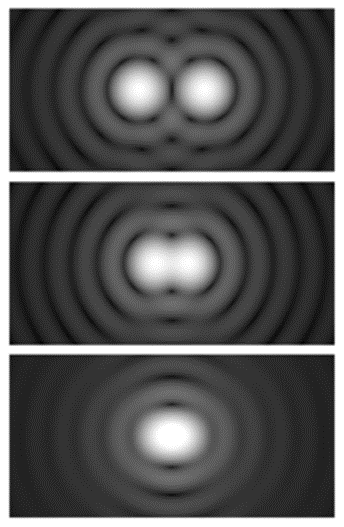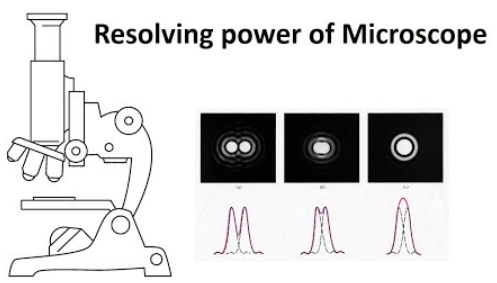The resolving power can be defined as the inverse of angular separation or distance, between the objects, and that can be resolved when viewing through the optical instrument. In the sky, some of the binary stars appear as one star, when they are viewed by the naked eye, but by using the optical instruments, their images can be resolved.


Resolving Power of Telescope
In the telescopes, very close objects such as individual stars, and binary stars of the galaxies, are subtended by the smaller angles on the telescopes. Larger apertures are required to resolve them. The Rayleigh can be used for the determination of the resolving power.
Resolving power = 1/△θ = d/1.22 λ
The higher the diameter, leads to the better the resolution. In the best astronomical optical telescopes, mirror diameters are provided that are larger enough as 10m for achieving the best resolution. The larger wavelengths cause the reduction of resolving power, and consequently, for the microwave and radio telescopes, larger mirrors are required. The simple telescopes contain, an objective lens having a large aperture, and high focal length, and eyepiece of small aperture and lower focal length. The resolving power of the telescope is its ability to make separate images of two closely spaced sources. The plane waves from each of the sources, pass through the aperture from the diffraction pattern of aperture. It is just overlapping of the diffraction patterns that are formed by the set of two sources as a theoretical upper limit to resolving power.
Resolving Power of Microscope

The resolving power for microscopes is inverse of the distance between two objects that can be just resolved.
Resolving power = 1/△ d = 2n sin θ/λ
Here n represents the refractive index of the medium that is separating the aperture and object. If the purpose is to achieve a high resolution, then n sin θ should be larger. It is also known as the numerical aperture. The numerical aperture, of the used objective lens, is dependent on the optical aberration correction.
The resolution of the microscope should not be confused with the magnification, as it is the shortest distance between two different points in the field of microscope view, that can be distinguished as the distinct or far entities. When the two points are closer than resolution, then their positions will not be exact and they will appear as ill-defined. The microscopes can also offer high magnification, but if the quality of lenses is poor, then the poor resolution will result and the quality of the image will be deteriorated.